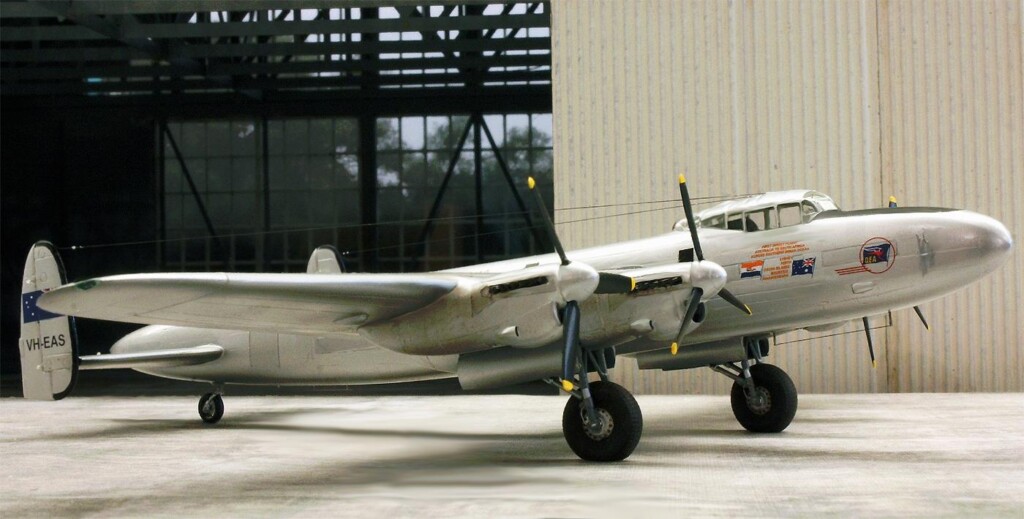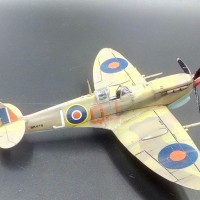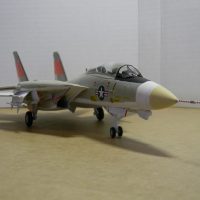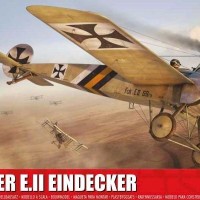Lancaster or York? Definitely a Lancastrian! Avro Lancastrian VH-EAS, Qantas 1949
The name "Lancastrian" may sound strange to uninitiated ears, but it has significance and weight in English history: the aristocratic party of the House of Lancaster had fought with the supporters of the House of York in the cruel conflict for the English throne, which left an extremely bloody trail through the second half of the 15th century as the "war of the roses". The name refers to the symbols of the two opposing sides: a white rose stood for the House of York, its red counterpart for the “Lancastrians”.
The name "Lancastrian" is well chosen in this context, as the type was created in 1943 at "Victory Aircraft" in Canada (later Avro Canada) by converting an Avro Lancaster X. The initiative for this came from "Trans Canada Airlines", which needed a long-range transport and passenger aircraft. With surprisingly few changes, they tried to turn the bomber into a passenger aircraft: the removal of armament and armouring created space, reduced weight and also made it possible to significantly improve the aerodynamics by replacing the nose and tail turrets with elongated conical fairings.
The fuselage area behind the bomb bay was chosen for the position of the passenger compartment. In view of the Lancaster's narrow fuselage, the seating arrangement was ingenious: the nine seats were arranged at right angles to the direction of flight with a view to the right, meaning that windows were only required on the starboard side. The rearmost seat was at the level of the entrance door, which was now also fitted with a window. The former bomb bay was equipped with 1800 litre tanks, which further increased the already impressive range of a Lancaster: with a payload of one tonne, the Lancastrian flew 6600 kilometres, and even with a maximum payload of 2200 kg, the range was only slightly reduced to 5150 kilometres. The four R&R Merlin 24/2 engines with 1600 hp each enabled speeds of up to 507 km/h, even the economic cruising speed of around 470 km/h was still relatively high.
The increasing demand for passenger and transport aircraft that became apparent towards the end of the war helped the Lancastrian interim solution to achieve an astonishing range of variants and a relatively high production figure. Of the four official versions Avro Lancastrian C.1, C.2, C.3 and C.4, a total of 91 aircraft were produced. Included in this figure are the first nine Lancastrian XPP, which were converted from Lancaster for "Trans Canada Airlines".
The Avro Lancastrian was characterised by its high speed, large payload and considerable range; all qualities that it had inherited from the original Lancaster. However, this inheritance also included a design weakness: the narrow fuselage of the bomber was not at all suitable for a passenger aircraft. One way of dealing with this challenge was to position the few seats transversely, as was standard on the C.1 to C.3 versions. It was not until the C.4 that the seats were arranged in a more familiar way, facing the nose, and the number of seats could even be increased from nine to thirteen.
The increasing demand for passenger aircraft and the rebuilding of a civilian route network also led to the widespread use of the Lancastrian. In addition to the Canadian TCA, it was also used by the British BOAC and the Australian Qantas as well as a whole bunch of smaller British airlines. In the post-war years, the Lancastrian was also used on the continent by the Italian airline Alitalia. Military users also recognised the advantages of the type: Two examples flew with the Argentinian Navy and the Royal Air Force, although the latter used a much larger number: a total of three RAF transport squadrons were equipped with the Lancastrian.
15 of these RAF aircraft were used as cargo planes to supply the sealed-off Berlin in 1948/49. However, during the "Berlin Airlift", another further development of the Avro Lancaster progenitor was to become far better known and overshadow the Lancastrian: the Avro York!
As with the Lancastrian, the wings, engine and landing gear were taken over from the Lancaster, but the fuselage was completely redesigned from the outset: generously box-shaped and with a square cross-section, as well as its design as a shoulder-wing aircraft, it made it clear that a pure cargo and passenger aircraft had been consistently designed here. In terms of passenger numbers alone, the Lancastrian could only draw the short straw here.
Seen in this light, the "York" and "Lancastrians" once again entered the ring for a short time after 1945 - but fortunately without bloodshed and with a common goal: the new era no longer demanded (only) bombers, but high-performance cargo and passenger aircraft!
My model shows VH-EAS, a Qantas Lancastrian that made history: the aircraft inaugurated the Australian airline's "Kangaroo Route" in 1949 with the first successful direct flight between Australia and South Africa.
Kit and construction process
The one hundred and forty-four-fold reduction of the Lancastrian from Amodel is a challenge in many ways. Firstly, I noticed a peculiarity that I am also familiar with from other kits from this manufacturer: practically every part has to be touched up or at least trimmed. This is not really a problem, but it does slow things down a little.
The division of the construction steps and the layout of the parts make a good, well thought-out impression on me. However, individual steps proved to be so difficult that, to be honest, I failed at them. This mainly refers to the installation of the tiny etched parts, which were supposed to indicate the radiator of the four Merlins. I simply couldn't manage to fit the miniature parts at a similar angle or even align them evenly. Apart from my fine motor skills, this also has to do with the rather rough inner workings of the engine nacelle parts. In the end, they were simply "cancelled" - no great loss, as I was able to see on the finished model.
Another issue that I was able to tackle quite decisively was the engravings, which were far too deep for the scale. I filled them twice with filler and sanded them down to soften the impression. Even after this procedure, however, there is almost too much of it left over, which can be a real nuisance, especially with a glossy aluminium finish. However, sanding and filling enthusiasts will also get their money's worth with this model! Practically no part of this small model can be spared from sandpaper. This is relativised by the small size of the model: this work is done relatively quickly.
I can't say anything about the quality of the clear parts as I didn't use them. On the other hand, I used excellent vacuum formed material from Brengun. Masking the filigree struts was a pain and not always effective: I had to scrape off some parts of the finished model because the result looked too rough. This is where a very fine dry brush came into action, which I used to apply "silver" as delicately as possible in order to suggest rather than actually paint some of the struts. I am very happy with the appearance of the deep-drawn canopy, and I think the extra effort was fully justified.
It should also be mentioned that I added the aerials on the back of the fuselage and the underside of the nose as well as the brake lines on the undercarriage. The fine dipole aerials on the nose and the frame aerial on the lower rear fuselage, on the other hand, are from the kit.
To summarise, I can say that I was delighted with this project: I was able to gain some new experience in a small space. In addition, with the Lancastrian I got to know a highly interesting aircraft that I would like to build again on a larger scale. Once again, I would like to give Amodel roses for its choice of models - whether they should be in Lancaster red or York white is fortunately no longer a question.


























Roland, you come up with some very interestrian aircraft to build. And you do such a great job!
Thank you very much - that is welcome!
Well done Roland, Qantas, no U !
Shame on me- but at least I was consistent: about misspelled 🙂 Thank you very much for your comment and correction!
Another superb product from R.O. Sachsenhofer Flugzugbau AG! Definitely something one will not see often and a great result.
"sanding and filling enthusiasts" - I've never run across one of these weird modeling types. Do they really exist? 🙂
Thanks Tom - I'm pleased with your comment.
Well, the search continues! They must be stuck somewhere, with all these Amodel kits...
Another awesome build and an equally wonderful article, Roland!
Thank you very much, my friend!
Great article, Roland, it must have been weird to hear Lancasters flying over Berlin again.
A wonderful build of a wonderful aircraft, Roland @rosachsenhofer
I was not aware that the Lancaster was used for future aircraft.
Thanks for sharing this informative article.
Perfect NMF. I applaud the unique kit choice. Often these builds become the best conversation pieces.
Wow - looks way larger than scale! An excellent modeling project, expertly executed! (didn't plan on the alliteration, but now that I see it, I'll take credit!)
Well executed, especially in that scale. Very interesting subject.
Definitely one we don’t see everyday, Roland. Well done. I thought it was a 1/72 conversion at first.